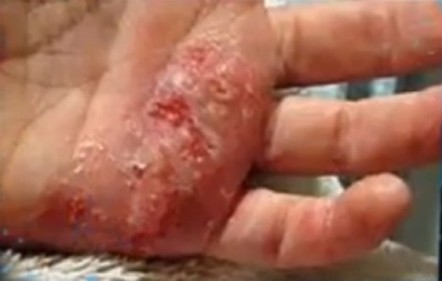Dyshidrosis: Causes, symptoms and natural remedies
Dyshidrosis is a form of chronic dermatitis manifested by the appearance of small vesicles, which are subsequently desquamate. Usually, arrive accompanied by itching, so it can become very annoying, especially taking into account that are preferentially located in the hands and feet.
Let’s see some facts and tips to combat a skin disorder that can become really annoying. If dyshidrosis becomes chronic may appear cracks, fissures and bacterial infection in the affected areas.
Table of Contents
Dyshidrosis symptoms
The most obvious symptoms are, as noted, the epidermal, small round vesicles unsightly. It appears mainly on the palms of the hands and feet, sides and back of the fingers of the hands and feet. Typically, the vesicles persist for three or four weeks, up to rupture of the vesicles and the peeling of the affected area.
Dyshidrosis Causes
Difficult, even almost impossible, to point out precisely what are the causes of the origin of the dyshidrosis. The real culprits are still unknown, but the known risk factors ranging from stress to allergy to metals, such as nickel. Both by direct contact, such as intake through food may be a risk factor for dyshidrosis. It may also be a response to a fungal infection of the feet.
Yes it is true, just as attested specialists in dermatology; this disorder is more common in patients with a history of atopic dermatitis, asthmatic bronchitis and allergic sneezing. In the case of smoking, it is advisable to quit the snuff as it can aggravate the symptoms.
Dyshidrosis treatment
Although there is no definitive treatment for combat dyshidrosis, there are therapies and drugs that help to mitigate the inconvenience. Always under medical prescription, you can take antihistamines and topical corticosteroids, effective in reducing the discomfort associated with the appearance of vesicles and soothe the itching.
In cases of chronic and recurrent dyshidrosis one of the most effective treatments is the ultraviolet rays from the sun in three or four weekly sessions for a month at least.
Dyshidrosis: Natural remedies
Emollient creams, gels or products prepared from aloe vera – with soothing properties – can be very useful to relieve the discomfort of the Dyshidrosis. Apply compresses soaked in chamomile, or dips your hands and feet in water with rice starch or sodium bicarbonate can help combat itching.
Along with natural remedies, there are other basic tips to prevent its occurrences, such as keeping hands and feet always clean and dry, use breathable shoe and whenever possible, use gloves and socks. Avoid any risk situation such as walking barefoot by the pool or areas of stagnant water, a habitat for fungi and infectious agents.
